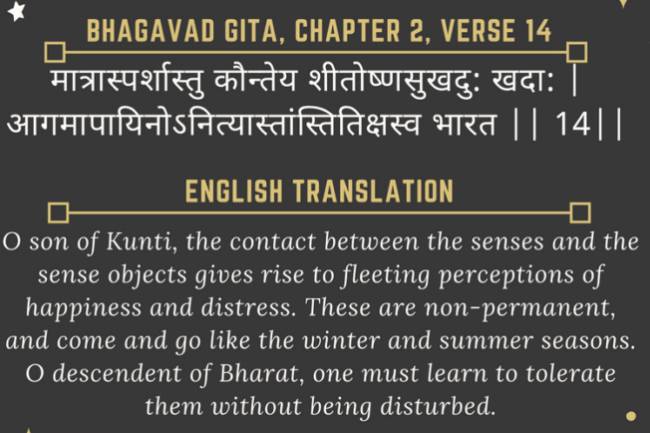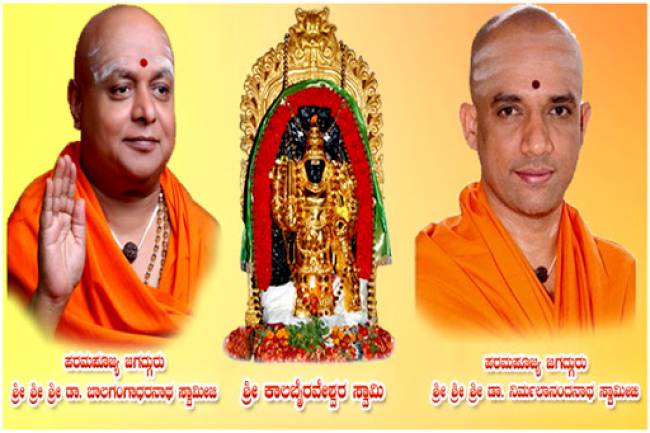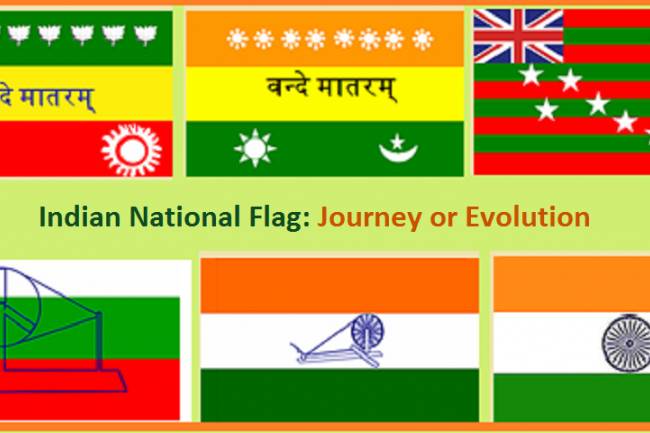
THE VEDAS
Origin of Vedas
The Vedas (word of Sanskrit origin, translating to ‘Knowledge’ or ‘To Know’), as the records point out to be originated in the Indian Sub-continent and its written form origin dates back to 1600 BCE. The Rig Veda, the oldest of 4 Vedas is said to be authored in and around 1600 BCE. However, no definite date can be ascribed to the composition of the Vedas as the generational descend of the texts in Vedic periods was by literary oral tradition, which was then a precise and elaborate technique. The first of the written Vedas date to 1st millennium BCE, though the surviving ones now date only to somewhere in between 11th and 14th century mostly due to the ephemeral nature of the manuscript materials; the birch barks or palm leaves.
The tales tell humans did not compose the revered compositions of the Vedas, but the knowledge was discovered by intense meditation and sadhana (Yogic practice) by ancient sages, who then handed them down through generations by word of mouth. Also, the followers of the Vedic Philosophy regard the Vedas as Apaurusheya; meaning, not of a man or impersonal, and according to the Vedanta and Mimamsa schools of philosophy, the Vedas are considered as svatah pramana (In Sanskrit, meaning “self-evident means of knowledge”). Some schools of thought even assert that the Vedas as of eternal creation, mainly in the Mimasa tradition. In the Mahabharata, the creation of Vedas is credited to Brahma, the Supreme Creator. However, the Vedic hymns themselves assert that they were skillfully created by Rishis (sages), after inspired creativity.
The 4 Vedas
There are four Vedas: Rig Veda, Yajur Veda, Sama Veda, and Atharva Veda, and all of them together are attributed to as ‘Chaturveda’. The Rig Veda serves as the principal one and all three but the Arthaveda agree with one another in form, language, and content.
Each Veda has been subclassified into four major text types – The Samhitas, the most ancient layer of text in the Vedas, consisting of mantras, hymns, prayers, and benedictions which has in literary terms put together or joined the other three texts; the Aranyakas which constitute the philosophy behind the ritual sacrifice, the Brahmanas which inturn has the commentary on hymns of four Vedas and the Upasanas, the one that focuses on worship.
The Rig Veda
Rig Veda, one of the oldest texts of the Indo-Aryan Civilization still extant, is an ancient Indian collection of Vedic hymns. Two Sanskrit words Rig and Veda constituting it translates to ‘praise or shine’ and ‘knowledge’ respectively. A collection of 1,028 hymns and 10,600 verses in all, organized into ten different Mandalas (or the books; Sanskrit), it is the principal and oldest of the four Vedas.
The cultural-linguistic records; mainly the variation in form of Sanskrit used (from present-day) point out the origin of the Rig Veda to have been around 1600 BCE, though a wider approximation of 1700–1100 BCE has also been given by experts. The initial written Rig Veda dates back to 1st millennium BCE although the extant ones today date back only to somewhere between 11th and 14th centuries; primarily due to the ephemeral nature of the manuscript materials which were either palm leaves or birch barks. Vedas, before the initial codification of which took place, were generationally handed over by the rich oral literary tradition, which was then a precise and elaborate technique. The earliest texts of the Rig Veda were composed in the greater Punjab (Northwest India and Pakistan), and the more philosophical later texts were most likely composed in or around the region of Haryana (Modern-day State of India).
Like the other three Vedas, the believers of the Hindu dharma regard the Rig Veda too as Apauruṣeya; meaning, not of a man or impersonal and also not belonging to a particular author. The hymns and the verses were written by the Rishis (Sages) and as the ardent believers of the Sanatana dharma claim the revered Lord himself taught the Vedic hymns to the sages, who then handed them down through generations by word of mouth.
Rig Veda has been sub-classified into four major text types – the Samhitas or the hymns that sing the praises of the Rig Vedic deities, some of whom are Indra, a heroic deity and the king of the highest heaven called Saudharmakalpa who slain his enemy Vatra, Agni- the sacrificial fire, Soma, the sacred potion or the plant which was a fundamental offering of the Vedic sacrifices and Ishwara, the supreme god-just to mention a few; the Aranyakas which constitute the philosophy behind the ritual sacrifice, the Brahmanas which in-turn has the commentary of the ancient sacred rituals and the Upasanas, the one that focuses on worship.
The Mandalas of the Rig Veda which are ten in number and were composed by poets from different priestly groups over a period of several centuries is structured based on clear principles – the Veda begins with a small book addressed to Agni, Indra, and other gods, singing the praises of the Lord. As the text progresses, the hymns meticulous with meters from jagati and tristubh to anustubh and Gayatri reveal the history of the Vedic period; hinting to the primitive slash and burn agriculture, cattle raising and horse-racing, deeply aesthetic society practicing henotheism (with substantial differences from monotheism) where they believed one God but the accepted its manifested deities, vividly evident from the central thought of the followers of the Hindu dharma ‘Brahman is everywhere, God inside everybody.’
But what is truly worth speculating is the pre-dominant discussions about cosmology, mystic forces, the existence of Universe and other metaphysical issues bringing the central theme of metaphysics ‘not about what exists, but about what it is to exist’. Shifting from the praises from the early Mandalas of Nasadiya to the later ones such as in the Sukta, philosophical or speculative questions about the origin of the universe and the nature of God, the virtue of dāna (charity) and rituals which are said to be the religious duties of a human are raised. Speculation reaches its epitome when questions such as ‘Do even Gods know the answer’ are raised; clearly religious scriptures should be the last place to doubt the in-depth knowledge of God, but in the Vedas, it seems it ain’t.
Rigveda, in contemporary Hinduism, has been a reminder of the ancient cultural heritage and point of pride for Hindus, with some hymns still in use in major rites of passage ceremonies, but to some experts, the literal acceptance of most of the textual essence is long gone. Louis Renou wrote that the text is a distant object, and “even in the most orthodox domains, the reverence to the Vedas has come to be a simple raising of the hat”. Musicians and dance groups celebrate the text as a mark of Hindu heritage, and these have remained popular among the Hindus for a long time. However, the contemporary Hindu beliefs are distant from the precepts in the ancient layer of Rigveda Samhitas.
The Sama Veda
The words of Rig Veda put to music, and are to be sung rather than to just be read or recited. Sama Veda, also the Veda of Melodies and Chants, is the third in the series of the four principle scriptures of Hinduism – Four Vedas. The Sama Veda, divided into two major parts, first to include the four melody collections, or the Saman, the songs and the latter the Arcika, or the verse books a collection (Samhita) of hymns, portions of hymns, and detached verses. A liturgical text, relating to public worship, all but 75 verses of the total 1875 is derived from the Rig Veda.
The ancient core Hindu scripture, of which only three recensions, the early edited versions have survived, the research scholars point out its existing compilations to have been originated in the post-Rigvedic period, dating approximately around 1200 or 1000 BCE, also the period being contemporary to Atharvaveda as well as Yajur Veda. But at the same time, many scholars are quick to point out that no specific date of creation can be attributed to the Vedas, which reconciles with the claim of ardent believers of the Hindu dharma of the Veda being Apauruṣeya; meaning, not of a man or impersonal and also not belonging to a particular author.
Widely referred to as the ‘Book of Songs’, it is derived from two words, Saman, of Sanskrit, meaning Song and Veda, meaning Knowledge. It is the Sama Veda, that has served as the principal roots of the classical Indian music and dance tradition, and proudly the tradition boasts itself as the oldest in the world. The verses of Sama Veda, as the tradition had followed, is sung using specifically indicated melodies called Samagana by Udgatar priests at rituals dedicated to different diets.
As it is the words of Rig Veda put to music, no wonder, alike the Rigveda, the early sections of Samaveda typically begin with singing the hymns of Rig Vedic deities, Indra, a heroic deity and the king of the highest heaven called Saudharmakalpa who slain his enemy Vatra, Agni- the sacrificial fire, Soma, the sacred potion or the plant which was a fundamental offering of the Vedic sacrifices and Ishwara, the supreme god-just to mention a few; but in the latter part shifts to abstract speculations and philosophy, the nature and existence of the universe and God himself are questioned and so are the social and religious duties of a man in the society. The purpose of Samaveda clearly is liturgical.
Two of the 108 Upanishads still extant are embedded in the Sama Veda, namely; Chandayoga Upanishad and Kena Upanishad. Upanishads, in a way the essence of Vedas, are ancient Sanskrit texts that contain some of the central philosophical concepts and ideas of Hinduism and are also shared in some other religions like Buddhism and Jainism. The Chandayoga Upanishad speculates about the origin of the universe and about space and time. Three proficient men in their Udgithas or chanting put forward some logical speculations even modern science could not outrightly reject. The Kena Upanishad tells us about how every man born has an innate longing for spiritual knowledge and that bliss comes only from spiritual attainment.
Such has been the influence of Sama-veda on Indian classical music and dance. So much so that the very essence of classical Indian music and dance tradition is rooted in the sonic and musical dimensions of the Sama-Veda itself. The Samaveda, in addition to singing and chanting, mentions instruments and also the specific rules and regulations of playing them, so as to preserves the sanctity of those ancient instruments. If one were to summarize the significance of the Sama Veda in a single line, Sama Veda, in contemporary Hinduism, has been a reminder of the majestic ancient cultural heritage and a point of pride for Hindus; not to mention that it still finds its usage in today’s society.
The Yajur Veda
Yajur Veda, of Sanskrit origin, is composed of Yajus and Veda; the two words translate to ‘prose mantras dedicated to religious reverence or veneration’ and knowledge respectively. Third of the fourth canonical texts of the Hindu dharma, this liturgical collection is famous as the ‘book of rituals’. Of the ancient Vedic text, it is a compilation of ritual offering formulas or the prose mantras to be chanted or muttered repeatedly by a priest while an individual performs the ascertained ritual actions before the sacrificial fire or the Yajna.
It has been, since the Vedic times, the primary source of information about sacrifices and associated rituals, more importantly, it has served as a practical guidebook for the priest, or the Purohits, as referred to as in Hindu dharma who execute the acts of ceremonial religion.
The scholarly consensus points out the bulk of Yajur Veda dating to 1200 or 1000 BCE, which when analyzed is younger than Rig Veda, whose origin has been approximated around 1700 BCE, but is contemporaneous to the hymns of Sama deva and Atharva Veda.
However, very much like the other Vedic texts, no definite date can be ascribed to its composition, rather they are believed to be of generational descend from Vedic periods by literary oral tradition, which was then a precise and elaborate technique. Also due to the ephemeral nature of the manuscript materials; the birch barks or palm leaves, no certain time period in the history can be ascertained to the origin of Yajurveda.
Also, common to the other three Vedas and as the tales tell, humans did not compose the revered compositions of the Vedas, but that God taught the Vedic hymns to the sages, who then handed them down through generations by word of mouth. Also, the followers of the Hindu dharma regard the Vedas as apauruṣeya; meaning not of a man or impersonal and also, according to some traditions in Hindu dharma such as the Vedanta and Mimamsa schools of philosophy the Vedas are considered as Svatah Pramana (Sanskrit, meaning “self-evident means of knowledge”). Some schools of thought even assert that the Vedas as of eternal creation, mainly in the Mimosa tradition. In the Mahabharata, the creation of Vedas is credited to Brahma, the Supreme Creator. However, the Vedic hymns themselves assert that they were skillfully created by Rishis (sages), after inspired creativity.
The Yajurveda is broadly grouped into Krishna Yajurveda and Shukla Yajurveda, also referred to as the Black Yajurveda and the latter as the White. In reference to the verses of the Krishna Yajurveda being un-arranged, unclear, and disparate or dissimilar, the collection is too often referred to as Black Yajurveda. In contrast, the well-arranged and imparting a particular meaning, the Shukla Yajurveda is known as the White Yajurveda.
The earliest and most ancient layer of Yajur Veda, Samhita includes about 1,875 verses, that are distinct yet borrowed from and built upon the foundation of verses in Rigveda. The middle layer includes the Satapatha Brahmana, one of the largest Brahmana texts in the Vedic collection and The youngest layer of Yajur Veda text includes the largest collection of primary Upanishads six in number, influential to various schools of Hindu philosophy. These include the Brihadaranyaka Upanishad, the Isha Upanishad, the Taittiriya Upanishad, just to name a few.
Sixteen recensions, or revised edition of a text, of the Shukla Yajurveda, have been said to be known, of which only two recessions have been discovered to have been survived. While the Krishna Yajurveda may have had as many as 86 recensions, of which only four have survived into modern times. Madhyandina and Kanva, the two recensions of the Yajurveda that have survived are nearly the same in contrast to the four surviving recensions of the Shukla Yajurveda, which are very different versions compared to one another.
Yajurveda, in contemporary Hinduism, has been a reminder of the ancient cultural heritage and point of pride for Hindus. The text is a useful source of information about agriculture, economic, and social life during the Vedic era. The verse, translated from the Shukla Yajurveda, for example, lists the types of crops considered important in ancient India.
The Atharva Veda
The fourth and final of the revered text of the Hindu dharma, the Vedas, the Atharva Veda, in short, is depicted as “knowledge storehouse of Atharvāṇas” Atharvāṇas meaning, formulas, and spells intended to counteract diseases and calamities, or “the procedures for everyday life”. A late addition to the Vedic scriptures, the word owes its roots to Sanskrit and the widely used epithet for the scripture is ‘the Veda of Magic formulas’. As it sides with popular culture and tradition of the day rather than preaching religious and spiritual teachings, it is more often viewed not in connection with the three other Vedas, but as a discrete scripture.
In popular context with being widely popular as the Veda of Magic formulas, Atharva Veda is a mixture of hymns, chants, spells, and prayers; and involves issues such as healing of illnesses, prolonging life, and as some claim also the black magic and rituals for removing maladies and anxieties.
However, many books of the Atharva Veda are dedicated to rituals without magic and to theosophy, a philosophy in itself asserting that the knowledge of God can be achieved through spiritual practice or intuition.
It is a collection of 730 hymns with about 6,000 mantras, divided into 20 books, with three Upanishads embedded to it; Mundaka Upanishad, Mandukya Upanishad, and Prashna Upanishad. Though not all but a considerable part of it is the adaptation of Rig Veda, the most ancient of all Vedic Scripture. As the tales have it and alike other three Vedas, the believers of the Hindu dharma regard the Atharvaveda too as Apauruṣeya; meaning, not of a man or impersonal and also not belonging to a particular author. The hymns and the verses were written by the Rishis (or the Sages) and as the ardent believers of the Hindu dharma claim the revered Lord himself taught the Vedic hymns to the sages, who then handed them down through generations by word of mouth.
However, no definite date can be ascribed to the composition of any Veda as the generational descend of the texts in Vedic periods was by literary oral tradition, the core text of the Atharvaveda falls within the classical Mantra period of Vedic Sanskrit, during the 2nd millennium BCE – younger than the Rigveda, and roughly contemporaneous with the Yajurveda mantras and the Sāmaveda.
The Samhitas in the Atharva Veda have written accounts of Surgical and medical speculations, it includes mantras and verses for treating a variety of ailments. For instance, the verses in hymn 4.15 of the recently discovered Paippalada version of the Atharvaveda, it discusses how to deal with an open fracture, and how to wrap the wound with Rohini plant (Ficus Infectoria, native to India). And so have speculations been made about remedy from herbal medicines, on the nature of man, life, good and evil and even spells and prayers to gain a lover. And some hymns were even about peaceful prayers and philosophical speculations, the origin of the universe, and the existence of God himself. It is indeed a collection of all sort of speculations that quite often leaves us bewildered.
As mentioned earlier, the contents of the Atharvaveda quite contrast with the other Vedas and is often viewed as a discrete scripture rather than in connection with the three Vedas. The 19th century German Indologist and historian Albrecht Weber has best put it as, “The spirit of the two collections [Rigveda, Atharvaveda] is indeed widely different. In the Rigveda there breathes a lively natural feeling, a warm love for nature; while in the Atharva there prevails, on the contrary, only an anxious dread of her evil spirits and their magical powers. In the Rigveda we find the people in a state of free activity and independence; in the Atharva we see it bound in the fetters of the hierarchy and superstition.”
The Atharva Veda still finds its relevance in today’s contemporary society as it has been a pioneer in influencing modern medicine and healthcare, culture and religious celebrations, and even literary tradition in the Indian sub-continent as it contains the oldest known mention of the Indic literary genre. The fourth and final of four Vedas still is one of the most cherished books for any Vedic scholar today.
source: VEDICFEED
























